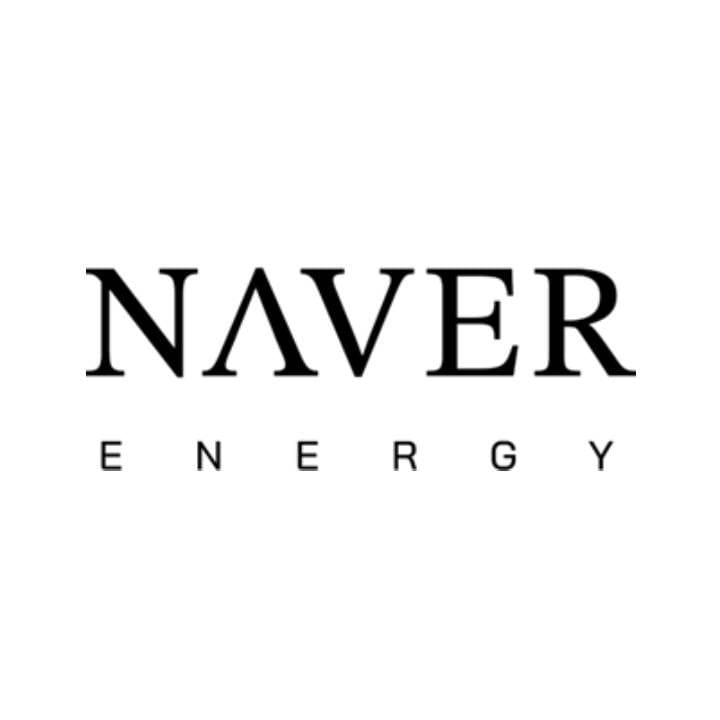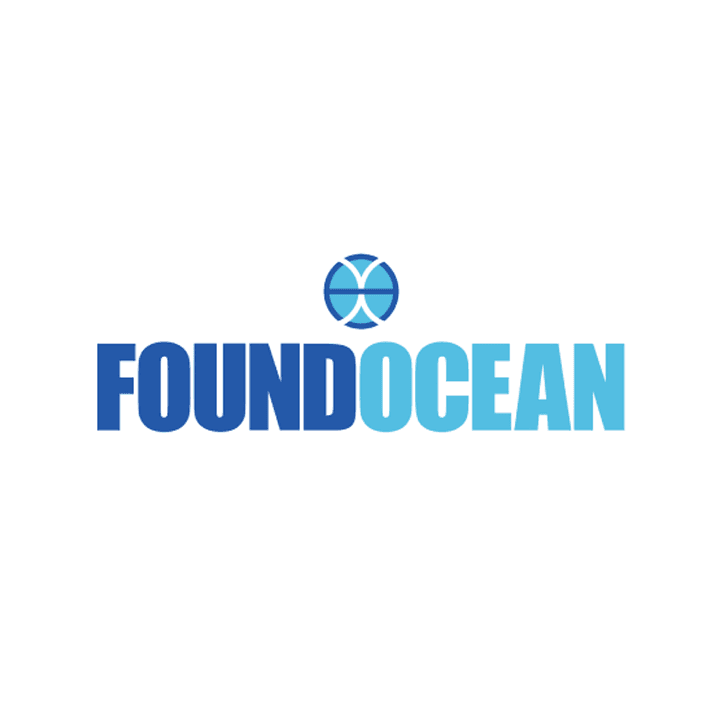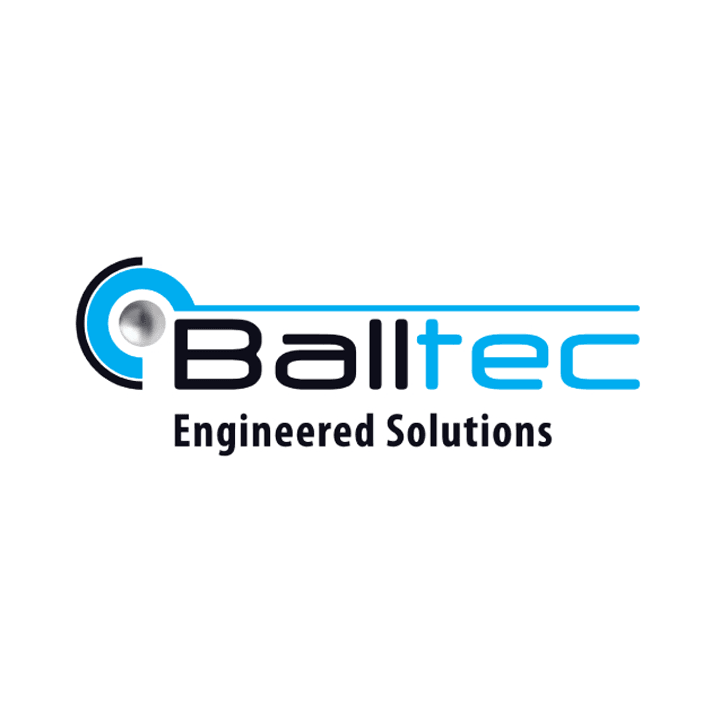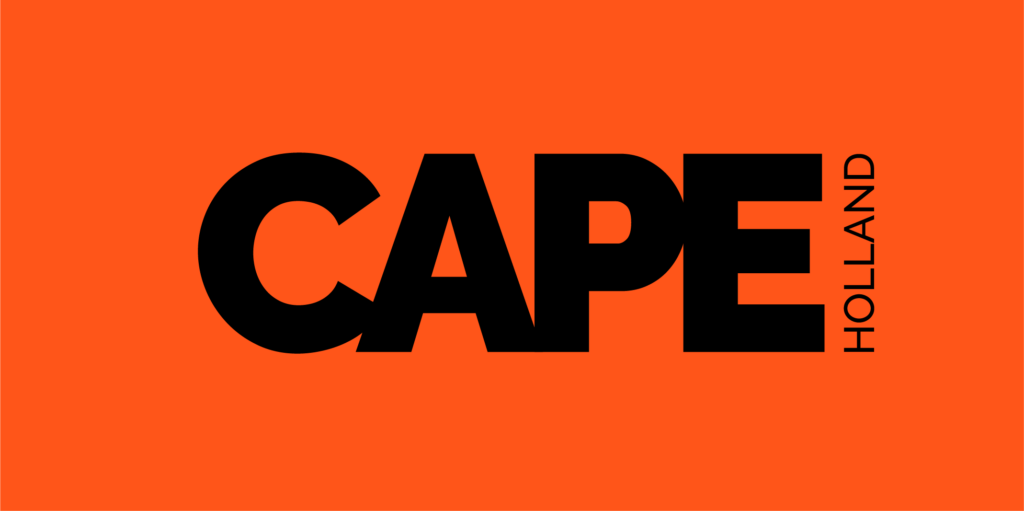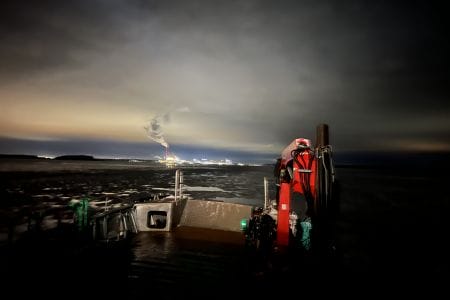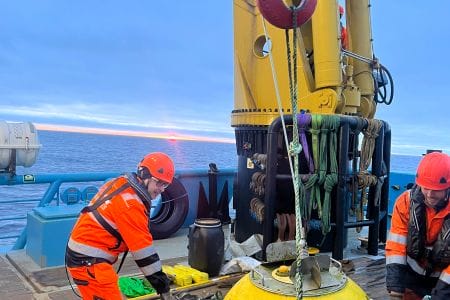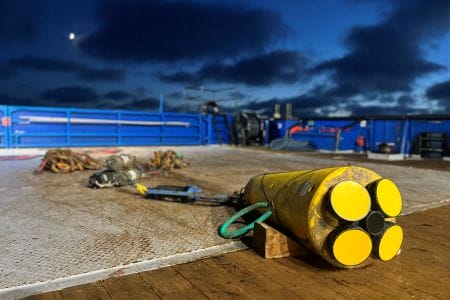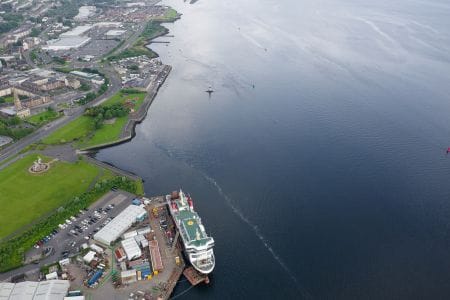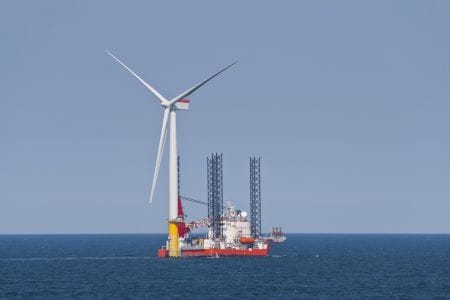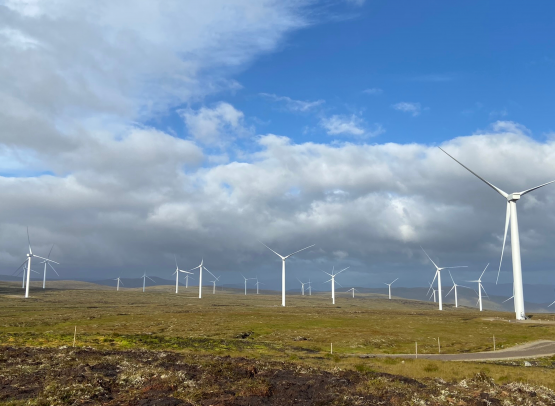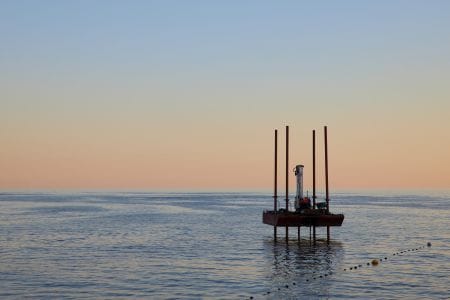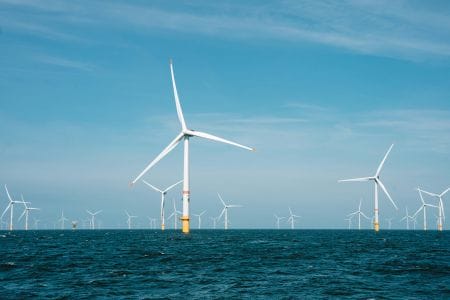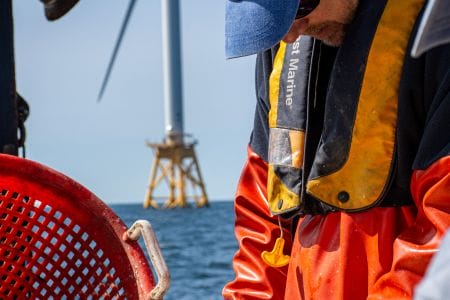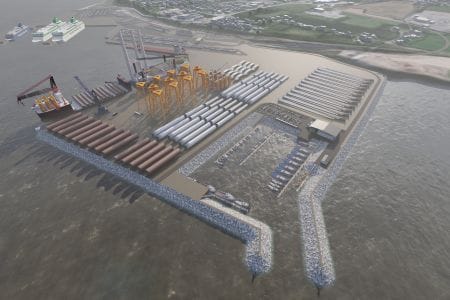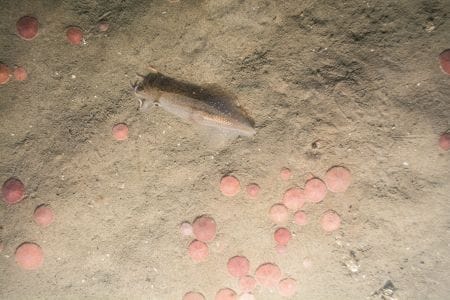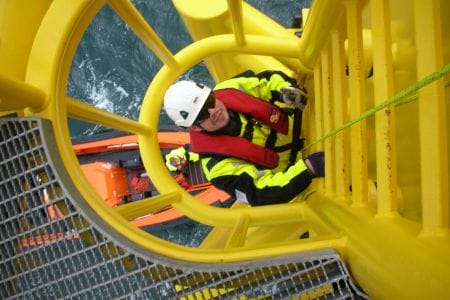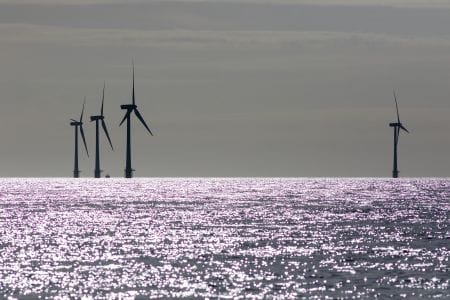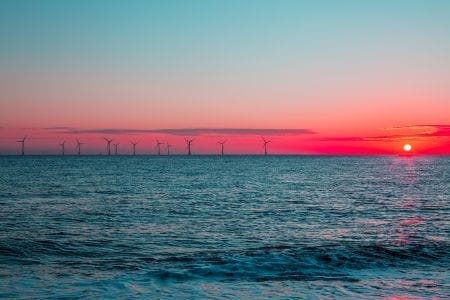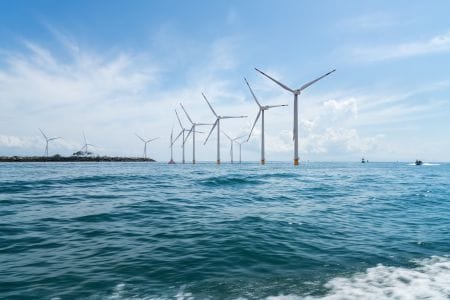Protecting the planet
Enabling sustainability
Almost everything we do across the Venterra Group is intended to help developers to operate as effectively and efficiently as possible – and, therefore, as sustainably as possible.
Pioneering the use of greener construction materials
Venterra member company FoundOcean, the world’s leading offshore construction grouting provider, is pioneering the use of greener construction materials.
Traditionally, fabric formworks (which are used to create subsea structures) have been made from polypropylene. Now, the company has launched a unique hessian-cotton alternative, which is strong and lightweight, as well as being organic, biodegradable, and recyclable.
The new approach was developed by FoundOcean’s in-house teams, using raw materials sourced from nearby its DNV-accredited manufacturing facility in Mumbai (a joint venture with India’s Ambico Group). It was then put through a series of rigorous field tests at the firm’s Scottish headquarters.
In 2022, it was used commercially for the very first time to help secure the new cable protection systems at a large wind farm in the German Bight of the North Sea.
Although the new material currently costs a little more than the polypropylene equivalent with a premium of around 25% it is expected that more wind farm developers will want to share in its environmental benefits. As volumes increase, it is likely that the price differential will fall as a result.
Using uncrewed vessels for efficiency, safety, and sustainability
Venterra member company INSPIRE Environmental works with clients to understand the health of the seafloor and the resources that depend on it. The team of marine environmental scientists designs benthic surveys involving state-of-the-art field equipment, focused sampling designs, and advanced data visualisation techniques. They recommend approaches that are as efficient, as safe, and as sustainable as possible.
For example, the firm has worked with Attentive Energy (the developer building a 3 GW wind farm in the New York Bight) on its inaugural benthic survey, a forward scouting survey to understand seafloor conditions and plot potential cable routes.
To do so, an Uncrewed Surface Vessel from the specialist provider XOCEAN was used to collect data efficiently and safely, without the need for an on-board crew. This is achieved by using satellite communication, 24/7 real-time pilot monitoring, a carbon-neutral hybrid power system and a 360˚ camera view. With a vessel of this type, the survey saved more than 170,000 lbs of fuel compared to a regular survey vessel.
Reusing waste materials in a major port upgrade
As well as working on wind farm projects, Venterra member companies also have an important role to play in developing some of the industry’s enabling infrastructure.
For example, Gavin & Doherty Geosolutions (GDG) recently worked on a major upgrade to Dublin Port helping to increase its overall capacity and accommodate the type of facilities that are needed for major offshore wind projects.
This involved the dredging of an existing basin and the creation of new staging and marshalling areas. The aim was to reuse the hazardous dredged material in the construction of the new facilities, which would involve the infill of an adjacent dry dock. To this end, GDG designed a treatment methodology using stabilisation/solidification technology which ensured that the performance of the end product would be both environmentally and geotechnically suitable.
With this approach, the volume of new construction materials was minimised saving significant resources and enabling a corresponding reduction in emissions.
Choosing nature-based design to enhance marine habitats
Surveys have shown that offshore wind farms often have a positive effect on marine habitats. For example, Venterra member company INSPIRE Environmental has conducted a series of six-monthly surveys at Dominion Energy’s first two offshore turbines, 27 miles off the Virginia Beach coast. As reported in the media, these have “become a haven for marine life” providing new habitats for fish and other species that wouldn’t typically be found this far out to sea.
With a team of marine environmental scientists and almost two decades of offshore wind farm experience, INSPIRE Environmental advises clients on how to use nature-based design to maximise the ecological benefits of their developments. For example, turbine foundations and scour and cable protection can be designed to mimic complex marine habitats expanding and enhancing the type of environments where fish, shellfish and other species live, eat and reproduce.
Indeed, the firm calculates that the wind energy developments that are currently planned around the USA have the potential to introduce an additional 3.75m square metres of novel marine habitat to America’s coastal waters.
Protecting marine habitats and saving on resources
In the past, many developers have erred on the side of caution and, consequently, many offshore wind farm structures have been over-engineered.
Hundreds of tonnes of potentially unnecessary materials have often gone into their construction and, in addition, many more hundreds of tonnes of rock and concrete have gone into the associated scour protection and cable route defences.
A specialism of Venterra member company Partrac is to accurately understand the impact of wind farm structures on the seabed environment, and ensure that coastal processes do not change as a result. Based on this knowledge, and drawing on detailed metocean survey data, Partrac can assess the true level of scour potential on a turbine-by-turbine basis.
Armed with this analysis, the optimum level and type of scour protection can be specified enough to protect the offshore infrastructure, but no more than is actually necessary. It’s an approach that saves on raw materials and the considerable resources needed to transport and install them, reducing overall environmental impact and, of course, it eliminates unnecessary spending.
Cutting down on vessel time with high-integrity lifting systems
The piles that are used to construct offshore wind turbines are never easy to handle.
Weighing hundreds of tonnes, and measuring several metres in diameter, they can be a challenge to lift from the dockside to the installation vessel, and then from the vessel to the installation site.
The conventional technique is for a rigger to laboriously attach a series of chains to each pile, which are then used to hoist the pile into position and need to be retrieved at the end of the operation. By contrast, the lifting systems produced by Venterra member company Balltec simply snap into position and can be released at the press of a button once the pile is in place.
On a recent assignment, one client reported that these Balltec systems had saved two-and-a-half hours for every pile installed. Across the entire project, this equates to a 250-hour reduction in heavy-lift vessel time and, over the past two years of Balltec’s operations, it adds up to a 60-day saving – equating to a saving of more than 170 tonnes of CO2 emissions1.
1.This estimate is based on the average Service Operations Vessel emissions reported by Workboat Association/Catapult.

